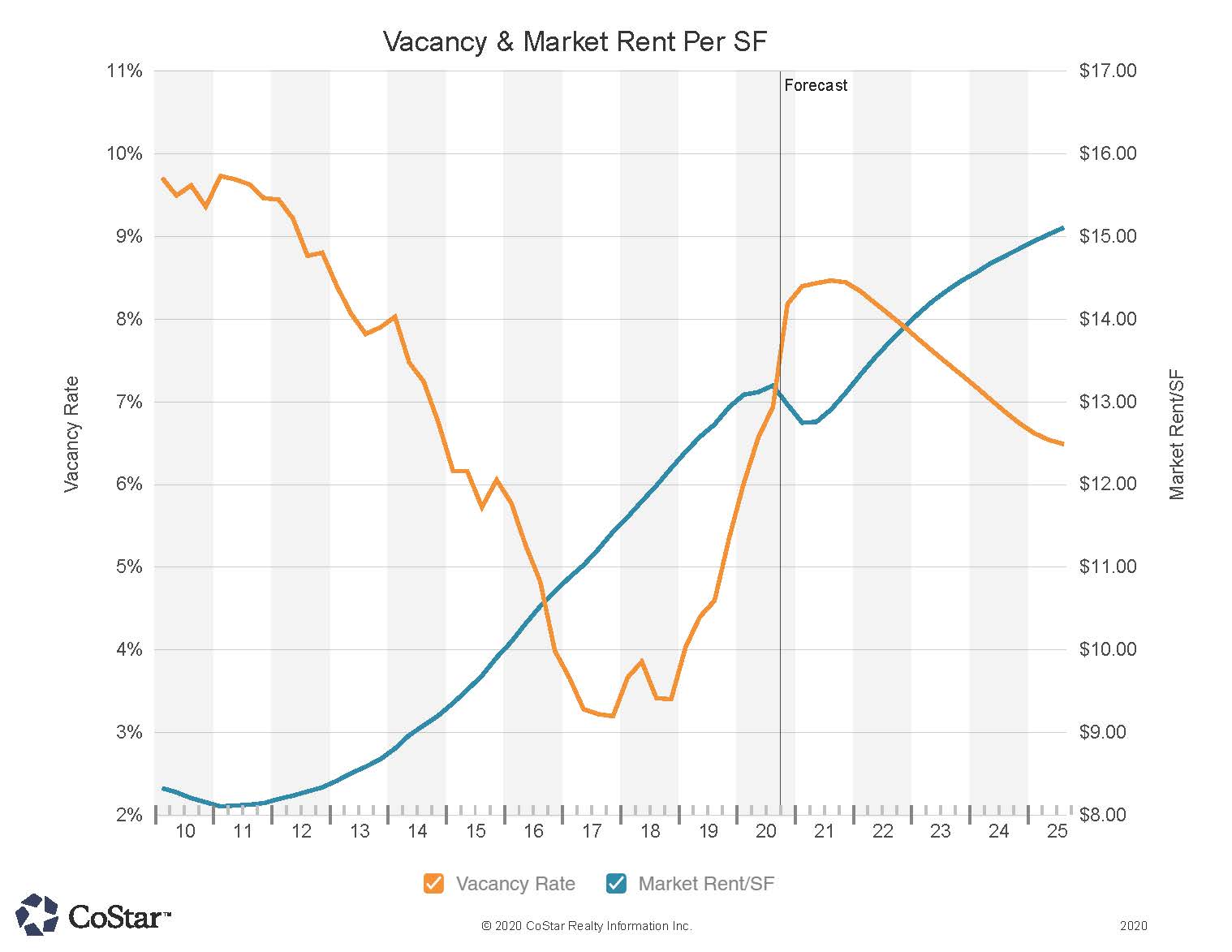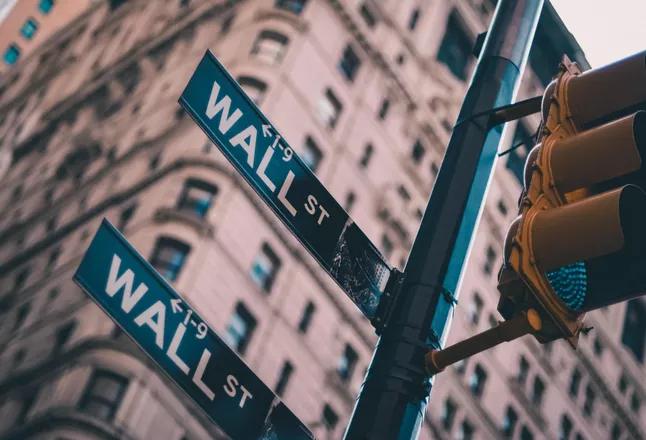Summary
Vacancies were on the rise over the year before the onset of the coronavirus pandemic due to the high level of speculative development and weakening demand. Industrial is the most insulated sector across Fort Lauderdale’s commercial real estate market. The onset of the coronavirus pandemic is having some operational impact on the sector. Social distancing measures deployed to contain the coronavirus spreading have had a significantly lower impact on industrial properties so far. Warehouse workers are not typically confined in small spaces, and this should limit the disruption in day-to-day operations. Depending on how long the region’s economy remains quarantined, the impact on Miami’s industrial sector over the medium term will be determined by how much economic activity weakens.
Fort Lauderdale’s industrial stock is close to 137 million SF, and it is South Florida’s second-largest market, after Miami. Demand is mainly driven by the local economy but also by trade going through Port Everglades, one of Florida’s largest ports. The three largest submarkets in this metro are Pompano Beach, Southeast Broward, and Central Broward, which hold a combined 65% of the metro’s industrial stock.
Due to its central location, Fort Lauderdale plays a vital role in South Florida’s industrial market. The presence of Port Everglades and its proximity to the Fort Lauderdale–Hollywood International Airport, as well as its convenient rail access and several of the state’s key highways, make Fort Lauderdale an attractive and flexible metro for logistics operations. Port Everglades is Florida’s top seaport for containerized cargo, exceeding 1 million TEUs. Industrial properties tend to cluster off I-95, near the Ronald Reagan Turnpike, and in the western portion of the market at the intersection of I-75 and the Sawgrass Expressway.
Leasing
A high level of deliveries and several quarters of negative absorption put the metro’s vacancy rate on a rising trajectory over the two years before the onset of the coronavirus pandemic.
Supply rose by 2% over the past year, following 2.4 million SF of deliveries. The weaker demand made it harder to find tenants for the newly delivered industrial product, as most of the construction was speculative in nature and failed to find tenants upon completion. At close to 15%, the preleasing rate of the under-construction product also points to weaker demand. Neighboring Miami is seeing a preleasing rate of close to 50%.
The demand outlook remains uncertain as the full impact from the coronavirus crisis onset is unknown at this point. A weakening economic outlook could translate to a further vacancy rate increase.
Rent
On the back of increasing speculative development, Fort Lauderdale metro annual rent growth was on the decline before the onset of the coronavirus pandemic.
Rents are close to $13.20/SF, with most submarkets clustering close to this level. The only exception is the Southeast Broward Submarket, which is located on the border with Miami-Dade County. This submarket is closer to Port Everglades, Port Miami, Miami International Airport, and Fort Lauderdale International Airport, affording it close to a 10% premium over average metro rents.
The demand outlook remains uncertain as the full impact from the coronavirus pandemic onset is unknown at this point. Under the Base Case scenario, the weakening economic outlook will translate to accelerating rent growth over the next several quarters. The severe downside scenario that is usually reserved for stress testing but is appropriate given the current market conditions calls for a close to 10% decline in rents over the next couple of quarters.
Sales
As with the rest of the country, the coronavirus pandemic has disrupted the financing and added uncertainty when pricing transactions that are currently in the pipeline. Lending spreads have recently widened significantly, something that could cause many deals that are now in the works to get canceled or renegotiated.
Sales volume over the year before the onset of the coronavirus pandemic was substantial. Investors continued to be attracted to this high-growth market, paying top-dollar prices for assets. Blackstone, Prologis, and Duke Realty Corporation all shop here and are paying prices that are the highest in the state. Prices are currently at $160/SF, and they rose by more than 60% over the past five years. Industrial prices in the Fort Lauderdale metro have appreciated at a rate much faster than the national average this cycle and surpassed Miami about three years ago.
The coronavirus economic fallout, together with the high level of speculative development, will lead to vacancies rising and further rent growth deceleration. As cash flows become less certain, valuations will become inherently riskier and, together with more expensive financing, will likely lead to a significant reduction in investment activity over the next few quarters as investors sit on the sidelines while the dust settles.
Economy
Though Fort Lauderdale has regained a portion of the jobs lost in the early months of the coronavirus pandemic, Broward County continues to feel the impact of lockdowns and a high caseload. As of the Bureau of Labor Statistics’ (BLS) release of August jobs figures, the metro was still down more than 80,000 jobs since February.
In March and April when the economy went into lockdown, Fort Lauderdale lost more than 130,000 jobs. Florida started to gradually re-open establishments in mid-May which led to a recovery of about 27,000 jobs in Broward County that month. The recovery continued, at a much slower rate, in the months which followed. In June, about 19,000 more jobs came back, but by July, as the city continued to contend with the spread of the virus, distancing mandates and limits on indoor gatherings were again implemented and jobs were again lost. By August, the county had recovered about 47,000 jobs, just 36% of the 130,000 jobs originally lost.
The virus continues to impact tourism, an industry which is important to Fort Lauderdale’s economy. Jobs in leisure and hospitality, which comprised more than 11% of the county’s workforce pre-pandemic, remained down about 30,000 jobs as of August. This represents a recovery of about 44% of the 53,000 jobs the sector lost in March and April.
Retail trade jobs have also been hit hard while shops have closed, and many people choose to stay home even after mandates have been lifted. About 113,000 people worked in retail trade in Fort Lauderdale pre-pandemic. As of the BLS’ August report, more than 8,000 such jobs had been recovered since the state re-opened in mid-May, but the sector was still down more than 5,000 jobs from February.
The greater trade employment sector, excluding retail trade, has struggled as well. In addition to the nearly 14,000 retail trade jobs lost in March and April, the market lost an additional 7,000 non-retail trade, transportation, and utilities jobs. By August, the sector was still down more than 5,000 jobs, having recovered less than 30% of losses.
Since South Florida implemented some of the longest lockdowns due to the heightened spread of the virus, the economic recovery here is likely to be slow. Broward County does benefit, however, from a diverse workforce where no one industry accounts for more than 20% of jobs. This should help to insulate Fort Lauderdale from higher losses as a proportion of the workforce during downturns.






